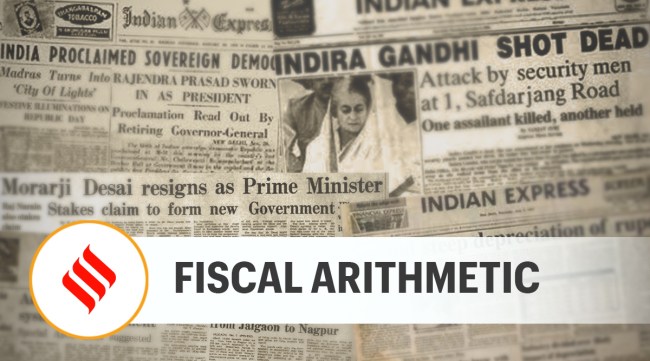Opinion Fiscal arithmetic
🔴 Tax collections are buoyant, but meeting fiscal deficit target set in Union budget will be difficult
 The disaggregated data shows that both direct and indirect tax collections have been fairly buoyant. The trends so far suggest that tax collections are likely to exceed the budgeted target by a significant margin.
The disaggregated data shows that both direct and indirect tax collections have been fairly buoyant. The trends so far suggest that tax collections are likely to exceed the budgeted target by a significant margin. Early next week, Finance Minister Nirmala Sitharaman will present the Union budget. The last budget had presented a roadmap for fiscal consolidation, projecting to bring down the fiscal deficit from 9.5 per cent of GDP in 2020-21 to 6.8 per cent in 2021-22, and thereafter, to below 4.5 per cent by 2025-26. This trajectory broadly mirrors the path laid out by the 15th Finance Commission. But, even though the Centre’s tax collections have grown at a fairly robust pace and nominal GDP growth this year is expected to surpass what was factored in the budget numbers, meeting the 6.8 per cent target for this year might be challenging with proceeds from disinvestment likely to fall way short of expectations, and considering the government’s additional expenditure outlays.
At the aggregate level, the Centre’s gross tax collections in the first eight months of the year (April to November) have already touched Rs 15.4 lakh crore. The disaggregated data shows that both direct and indirect tax collections have been fairly buoyant. The trends so far suggest that tax collections are likely to exceed the budgeted target by a significant margin. However, it is difficult to arrive at firm estimates due to the economic uncertainty stemming from the third wave of the pandemic. A major area of concern is the disinvestment target. As against a target of Rs 1.75 lakh crore, collections have so far only touched Rs 9,330 crore. But this shortfall is not a one-off. Last year too, the government was able to mop up only Rs 32,000 crore against a budget target of Rs 2.1 lakh crore. This trend of proceeds falling well short of ambitious targets is because disinvestment continues to be treated only as a means to shore up revenues to meet the fiscal deficit target, and not as part of a concerted effort to get the government out of business, and improve the efficiency of companies.
On the other hand, government spending does not appear to have maintained a steady pace. Spending has so far remained subdued in the third quarter, with total expenditure clocking only a 5 per cent growth, down from 21 per cent in the previous quarter. Spending though may pick up in the months ahead on the food and fertiliser subsidy, export incentives, and other items as detailed in the supplementary demand for grants. However, despite the criticality of public sector investments at this juncture, in eight months so far the government has spent just under half its full year budgeted capex. Considering that the economy is being driven by the engines of exports and government spending — private consumption and investments continue to remain muted — if government spending itself remains subdued, it will impact the economy’s growth prospects.






